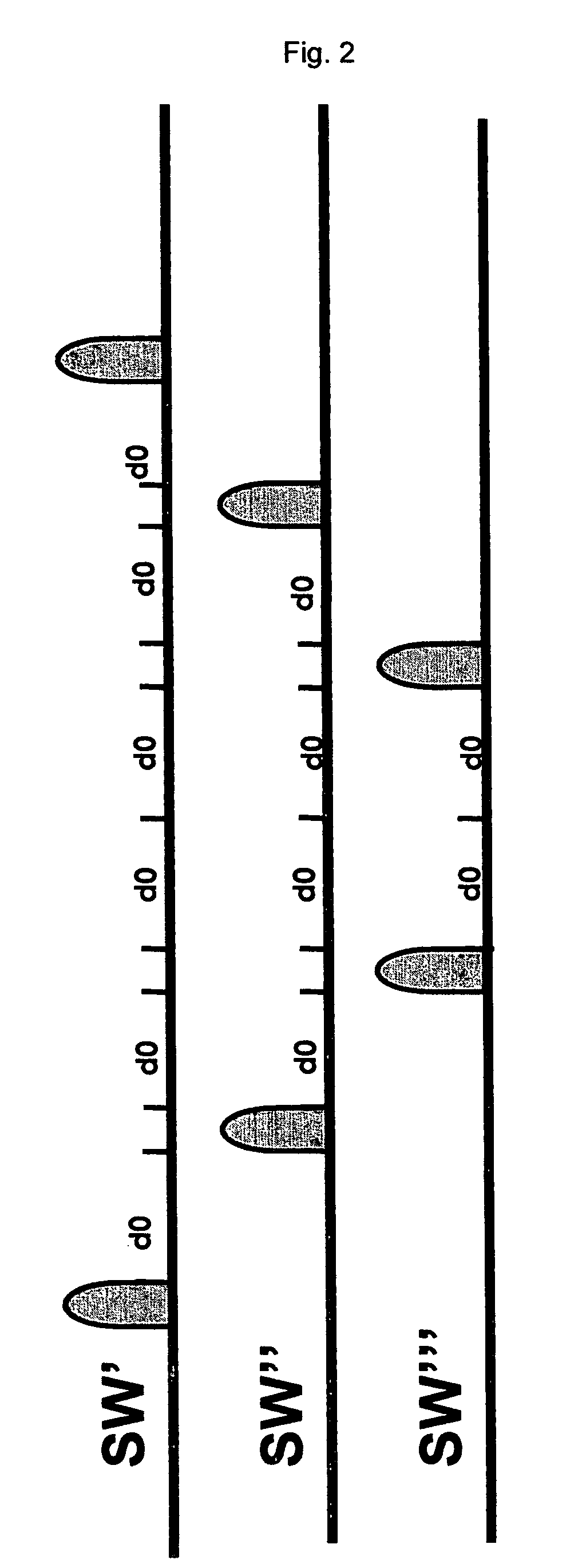Method for the acquisition of data relating to multi-dimensional NMR spectra by means of frequency-dependent convolution
a multi-dimensional nmr and spectra technology, applied in the field of frequency-dependent convolution acquisition of data relating to multi-dimensional nmr spectra, can solve the problems of relatively large sample amounts or high substance concentrations, difficult interpretation of multi-dimensional nmr spectra, and large sample amounts, so as to improve the evaluability of the resulting multi-dimensional nmr spectra, reduce the overall measuring time of an nmr experiment, and improve the resolution of the nmr spectrum
- Summary
- Abstract
- Description
- Claims
- Application Information
AI Technical Summary
Benefits of technology
Problems solved by technology
Method used
Image
Examples
Embodiment Construction
[0041]FIG. 1 schematically shows an embodiment of the SHARC sequence with a series of selective pulses P1, P2, . . . to Pw which are separated by a determined number of incrementable waiting times (delays)={n1, n2, . . . nX}, {m1, m2, . . . , mY}, . . . , {q1, q2, . . . , qZ}. The number {X, Y and Z} of the incrementable waiting times (delays) and the number of selective pulses W to be applied (and thereby the frequency ranges Oi, Oi+1 etc.) may be arbitrarily selected. The range of numbers that can be stated for W depends on the real length of a selective pulse chosen by the user. The real length of a selective pulse, in turn, depends on the desired excitation bandwidth. The shorter the length of a selective pulse, the larger the number of selective pulses that can be introduced into the sequence. The T1 / T2 relaxation mechanism is thereby the limiting factor. A preferred range W is 1 to 20.
[0042]The T1 / T2 relaxation delays (waiting time between individual scans, also called repetit...
PUM
 Login to view more
Login to view more Abstract
Description
Claims
Application Information
 Login to view more
Login to view more - R&D Engineer
- R&D Manager
- IP Professional
- Industry Leading Data Capabilities
- Powerful AI technology
- Patent DNA Extraction
Browse by: Latest US Patents, China's latest patents, Technical Efficacy Thesaurus, Application Domain, Technology Topic.
© 2024 PatSnap. All rights reserved.Legal|Privacy policy|Modern Slavery Act Transparency Statement|Sitemap



